Truly playful?
How to detect my horse’s play-face
When we observe horses doing free work, working on liberty dressage or performing circus lessons, we frequently see that they have their ears back or display other characteristics of stress and aggression. The most common explanation that mostly stifles further discussion is: “This is all just play – the horse only shows its play-face”. So, what does this play-face really mean? And what are significant characteristics that indicate when play turns into something else?
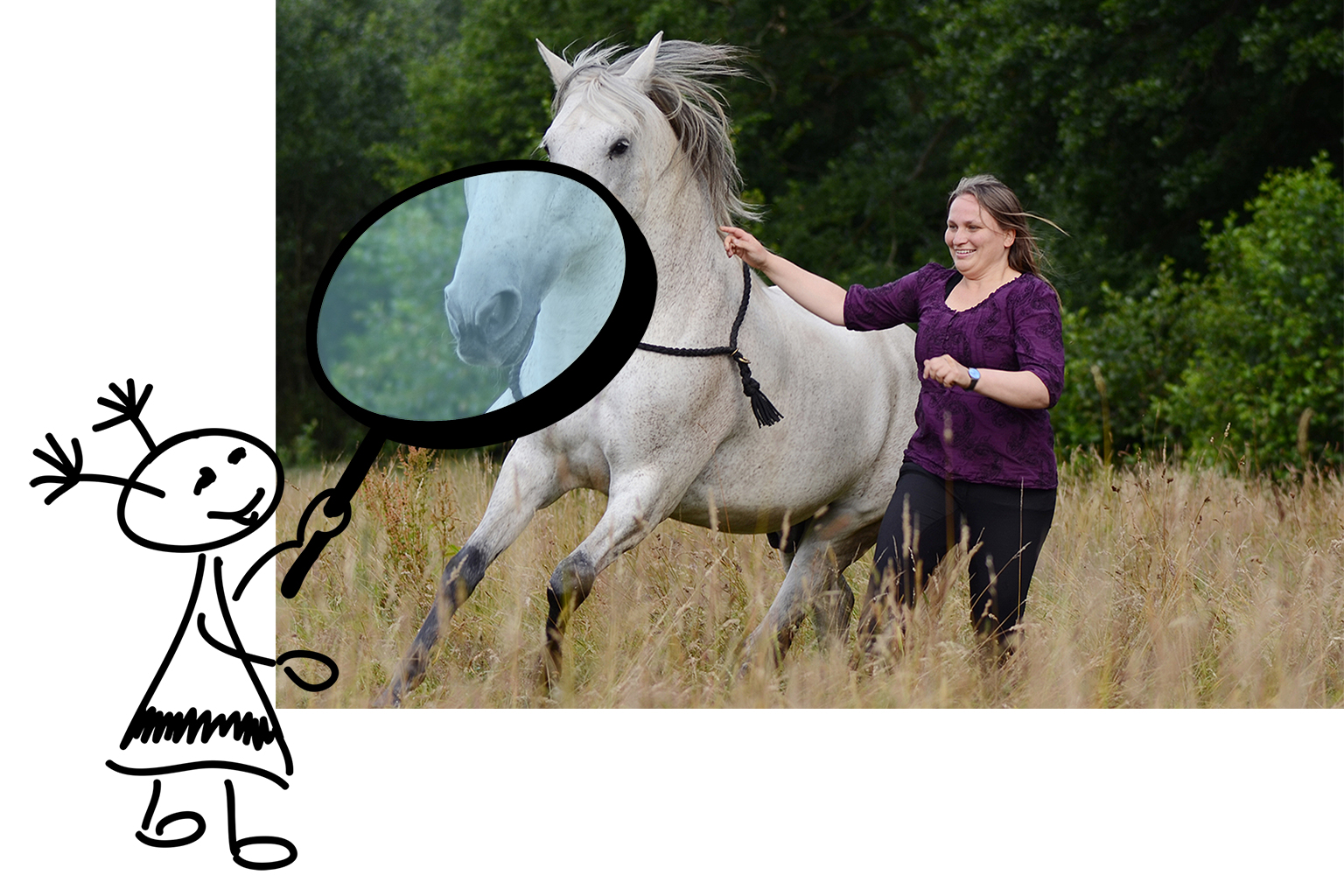
Play-face in words
Horses display their zest for life by showing relaxed facial muscles, big, round, and bright eyes, and above all, an elongated upper lip which is displayed as a reaction to any kind of excitement. The elongated upper lip can appear almost trunk-like, and can be observed in a variety of contexts including for example running games, rather calm play with objects, and playful fights. Particularly in running games, horses frequently have their ears pressed back flat onto their heads because horses adopt various specific roles in play. For example, they play hunter and hunted, and keep switching roles with their playmates during the game. In doing so, they are able to convincingly display aggressive facial expressions in certain sequences of the game. In other words, they act and engage in boisterous play that allows taking on different roles, and exploring them within a safe environment. Details reveal the difference between a play-face and true aggression: This is the amount of tension in the area around chin and nostrils, the amount of tension of the chewing muscles and the lips, and a frequent change in the ear’s expression.
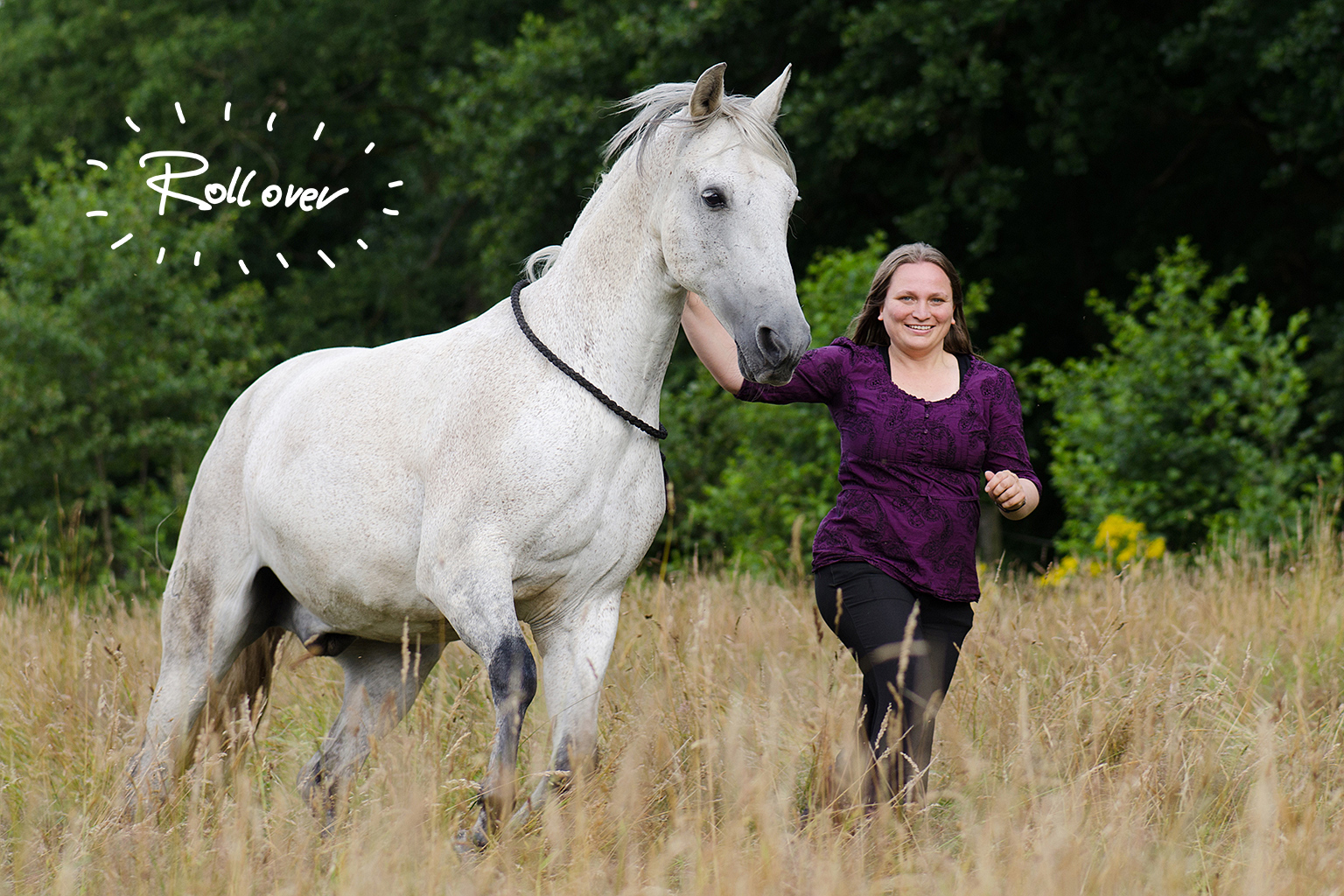
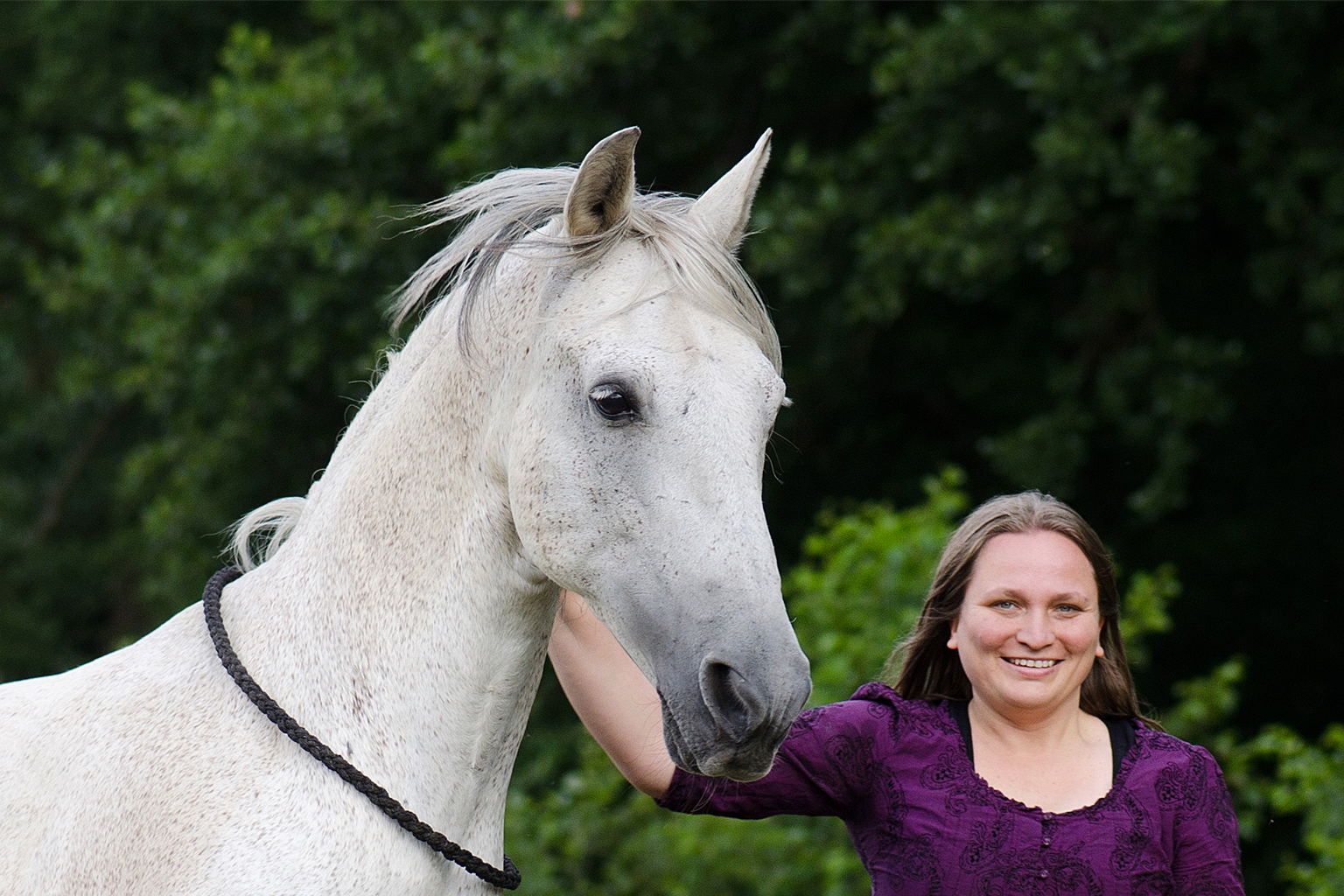
Characteristic change of position
Imagine the following scene: One horse chases the other in wild play, and expressively “threatens” its friend by displaying ears that are pressed flat back onto its head. The pursued horse stops, turns back, and faces its hunter. Such playful fights are frequently followed by a sequence of mutual biting and rearing. The ear’s expression immediately changes, and now the pointed ears face forward. This natural change of expression also plays an important role when we look at sequences of groundwork. A truly playful horse is able to switch within split seconds from threating canter to just standing around in a friendly manner. However, we frequently find horses doing liberty dressage that are not playing in a true sense: They do not switch between brief moments of tension, and a relaxed and friendly form of expression but remain tense and strained even in more quiet moments; their muscles are hardened, the ears face sideways and backward, and there is a great amount of tension in the area around lips and nostrils.
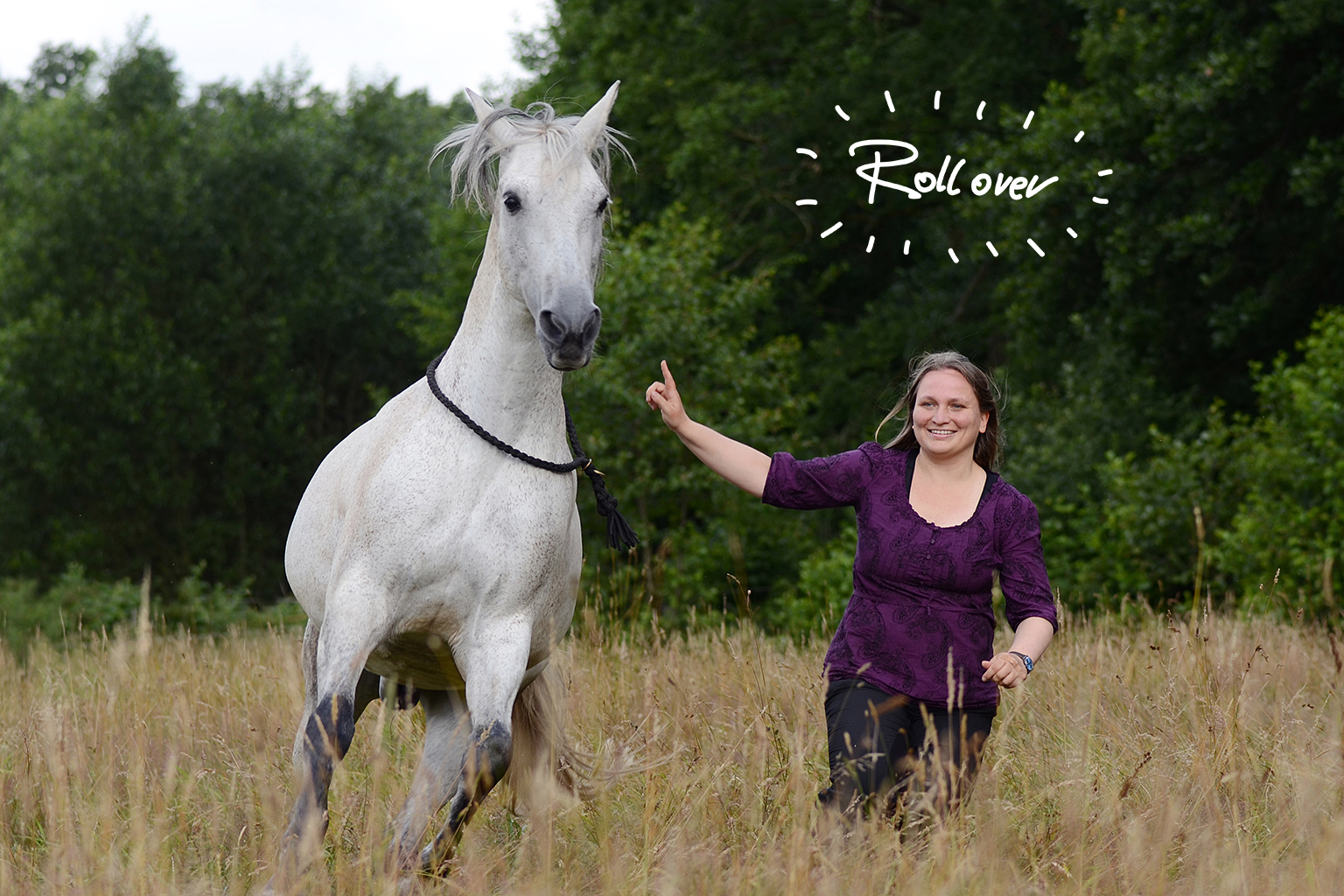
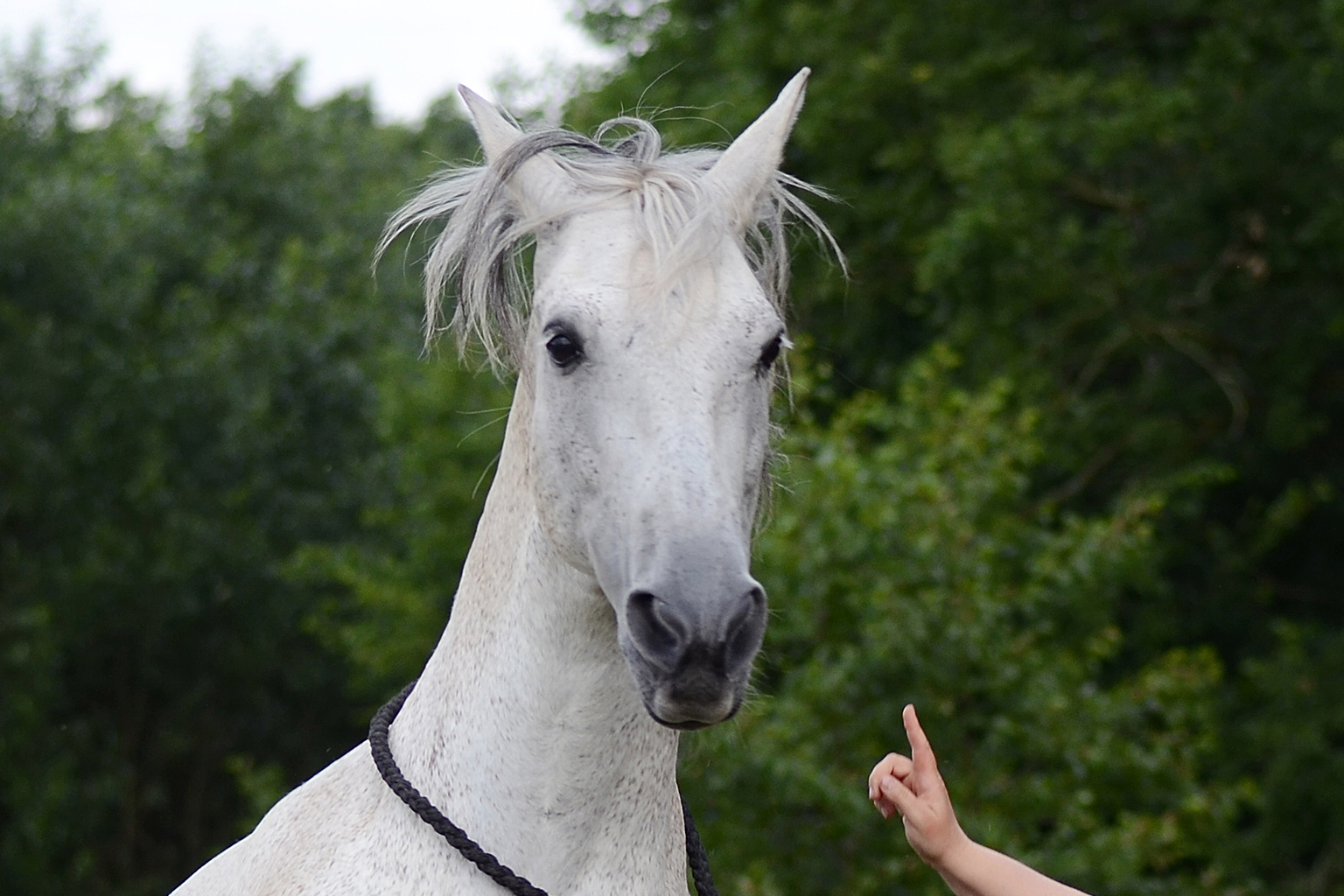
Playing is not being played
There is a huge difference between putting your heart into voluntary, joyful play with someone else, and playing (for) someone else because the second form of “play” mostly includes a certain degree of manipulation. Playing in a true sense involves two or more equal partners who interact with each other but are also allowed to act independently of the other. Their actions are free, and they allow themselves to get carried away by a moment’s exuberant atmosphere. So, we should remain cautious whether we really observe a playing horse if we see horses performing liberty dressage, at shows, or doing groundwork that are not able to choose to participate. Furthermore, typical aids like ropes, whips, and leads applied to “motivate” a horse give rise to the suspicion that they are rather used to drive the horse than to play with it. In the end, true play does not require threats of violence, and needs not be reinforced by “aids”.
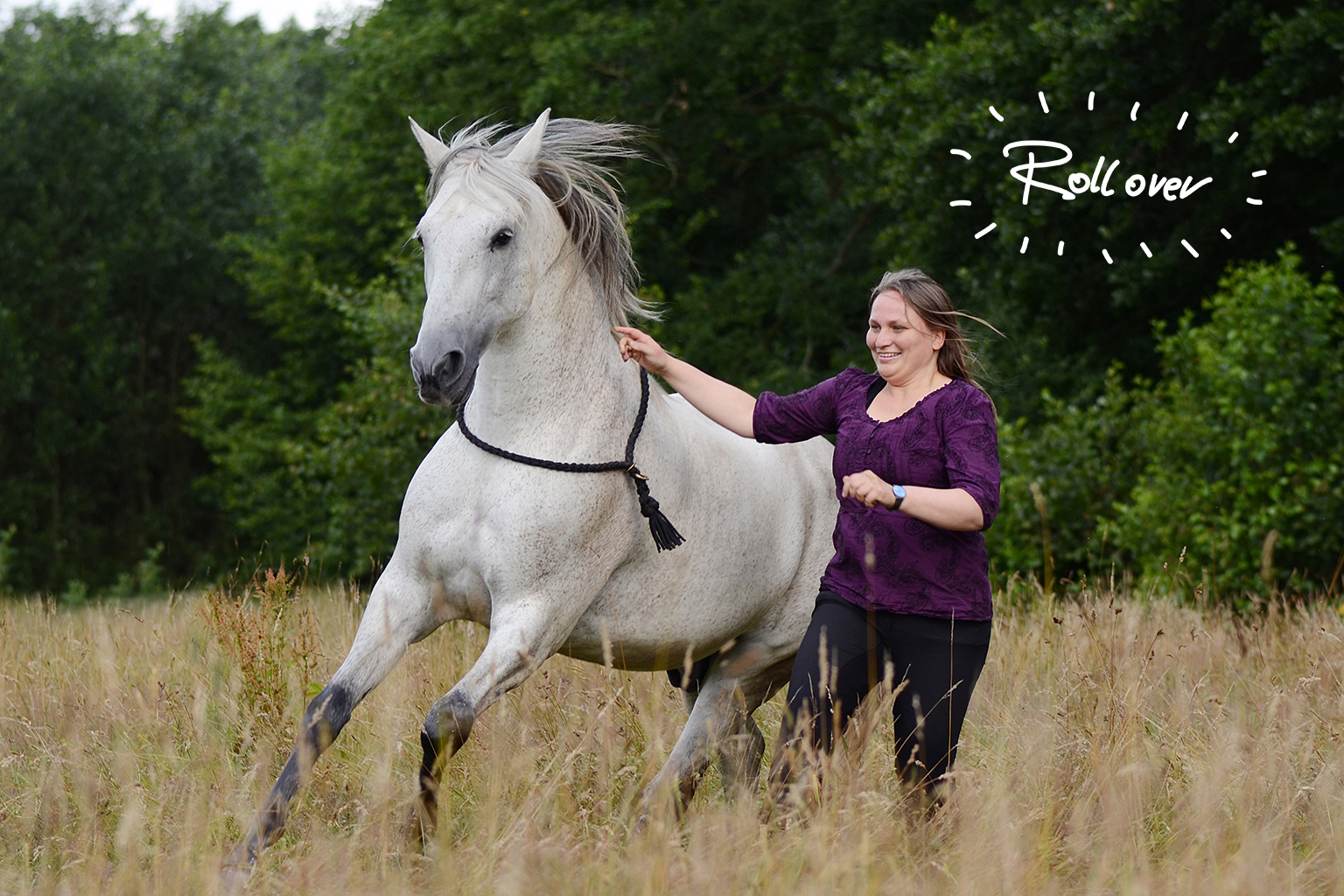
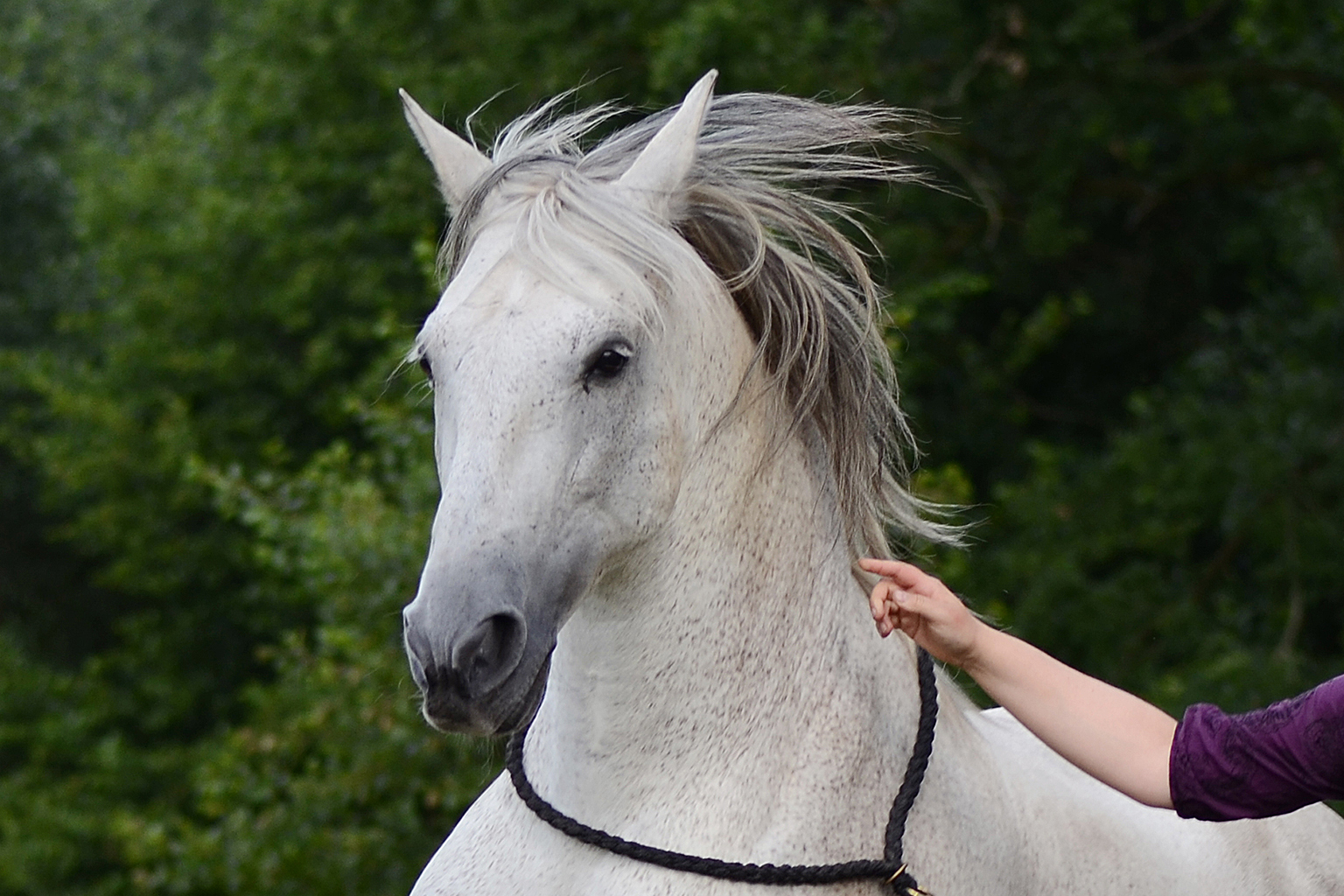
Playing requires liberty
The following photo series shows a running game Harry and I like to play. We call it “Hoppigaloppi” which is a playful word construction that combines “gallop” and “jumping”, and that reflects the nature of our running game. In “Hoppigaloppi” the canter or gallop is creatively transformed, and it is jumped, skipped, and accompanied by a frequent nickering that sounds like “ay-ay”. We quickly run along each other’s side, we move on straight ahead one time, and then we move along an imaginary circular line other times. In other words, we surrender to this game as if connected by an invisible thread of spontaneity that originates from this very moment and we dedicate ourselves to this invisible thread or bond that arises out of mutual trust, and the free space we are willing to give to our partner.
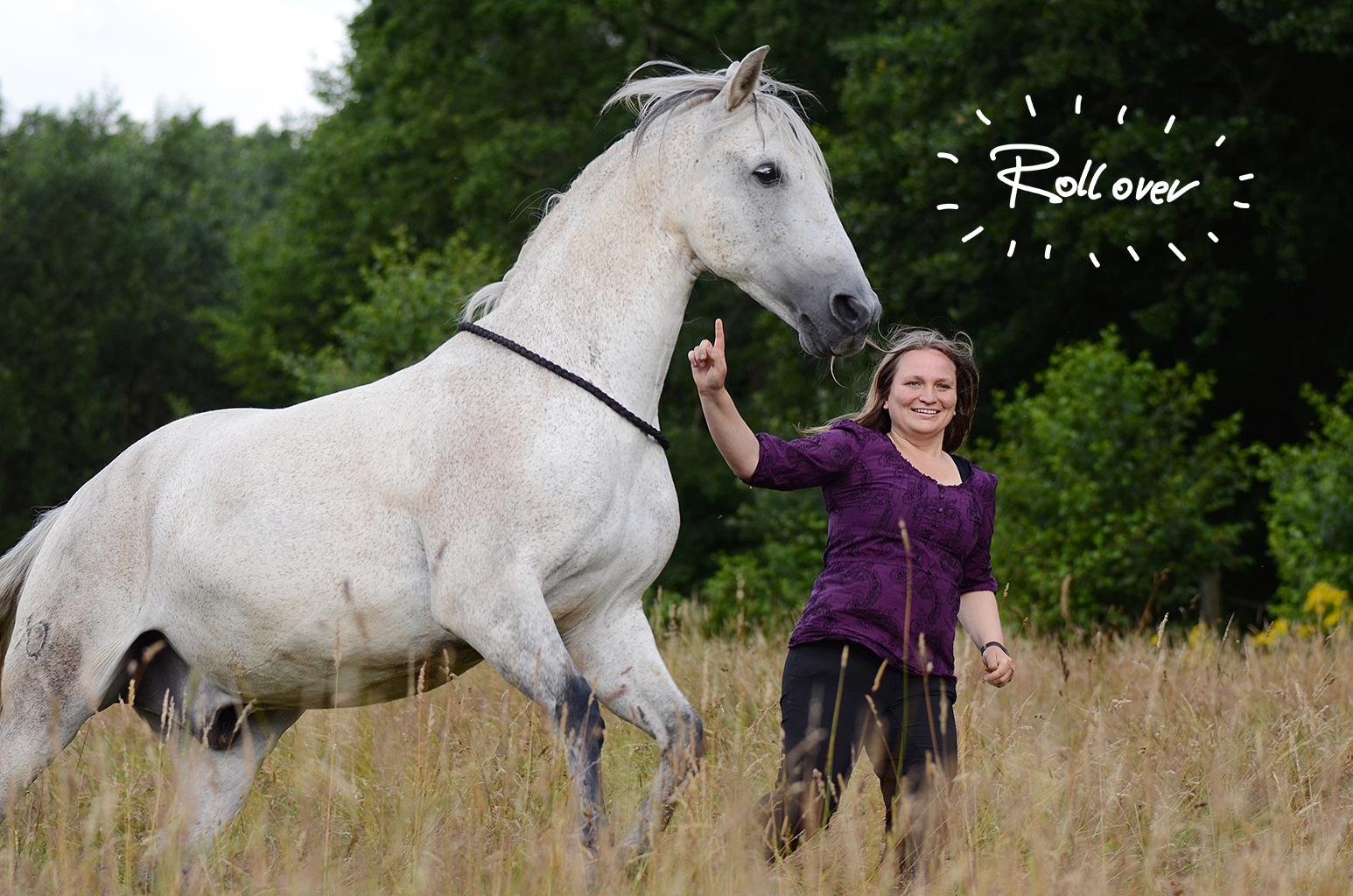
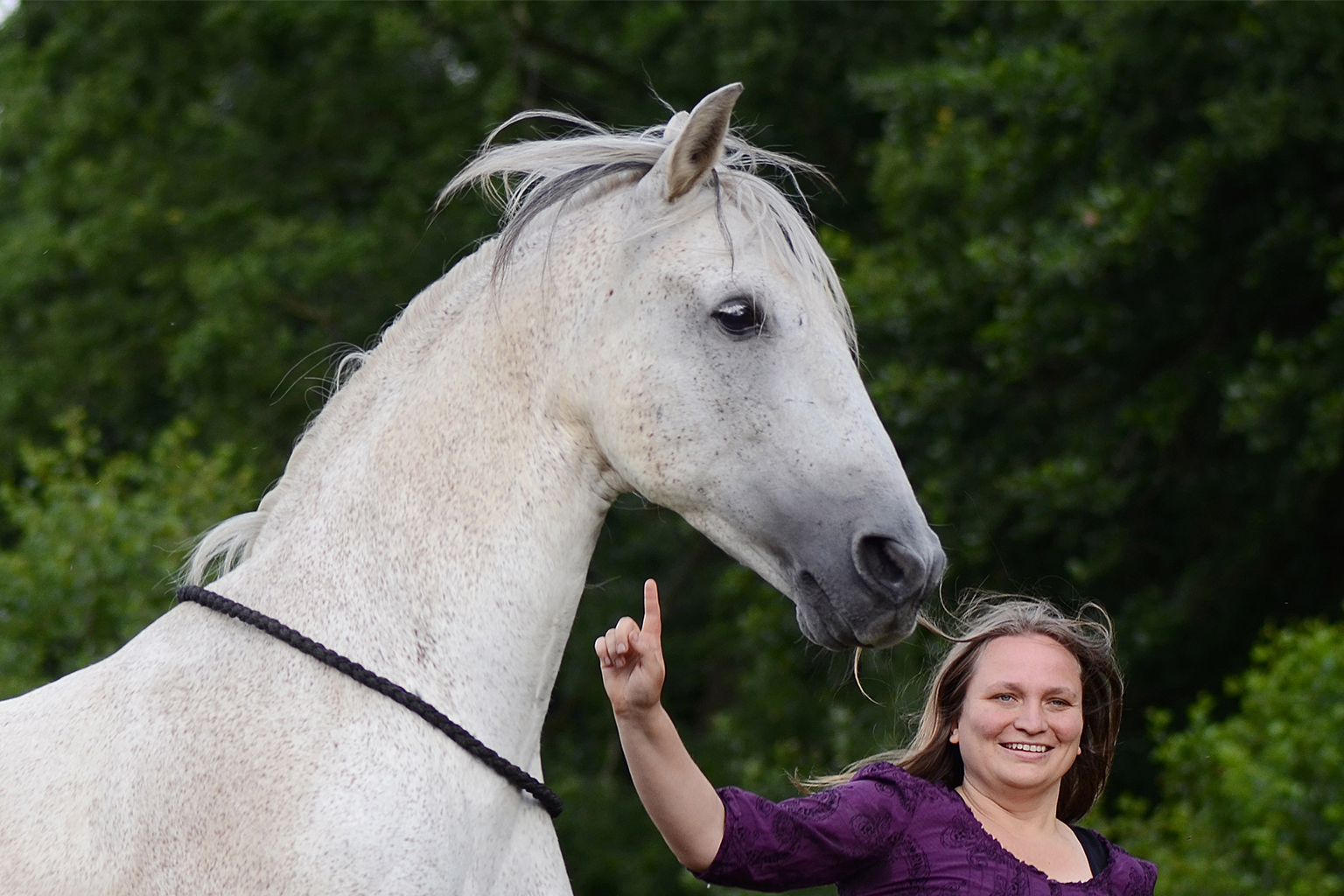
Marlitt Wendt & Conny Ranz


